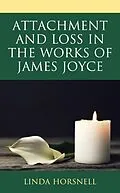Using John Bowlby's Attachment Theory as a frame of reference, Attachment and Loss in the Works of James Joyce critically analyzes James Joyce's representation of grief. Based on cognitive, emotional and behavioral elements, Attachment Theory allows for new and innovative readings to emerge which differ from those offered by Freudian, Lacanian, and Jungian paradigms. Acknowledging the importance of the Theory of Mind and Reader Response, this book uses the concept of internal working models to elucidate how the childhood experiences with which Joyce has endowed his protagonists ultimately leads to how they respond to loss. The texts of Dubliners, Portrait of the Artist and Ulysses, show how central separation and loss were to Joyce's work. It provides examples of such experiences in different age groups, under differing circumstances and at different stages in the grief process. Attachment Theory highlights the complexity of human relationships throughout the life cycle, not only how they can affect the grief process but how grief affects them.
Autorentext
By Linda Horsnell
Klappentext
Using John Bowlby's Attachment Theory as a frame of reference, Attachment and Loss in the Works of James Joyce critically analyzes James Joyce's representation of grief. Based on cognitive, emotional and behavioral elements, Attachment Theory allows for new and innovative readings to emerge which differ from those offered by Freudian, Lacanian, and Jungian paradigms. Acknowledging the importance of the Theory of Mind and Reader Response, this book uses the concept of internal working models to elucidate how the childhood experiences with which Joyce has endowed his protagonists ultimately leads to how they respond to loss. The texts of Dubliners, Portrait of the Artist and Ulysses, show how central separation and loss were to Joyce's work. It provides examples of such experiences in different age groups, under differing circumstances and at different stages in the grief process. Attachment Theory highlights the complexity of human relationships throughout the life cycle, not only how they can affect the grief process but how grief affects them.
Inhalt
Part 1: Theory
Chapter 1: The Development of Attachment Theory
Chapter 2: Attachment Theory: A Universal Theory
Chapter 3: The Representation of Character and Reader Response
Chapter 4: Attachment Theory and Literary Interpretation
Part 2: The Portrayal of the Emotional Impact of Bereavement and Ensuing Grief
Part 2 Introduction
Chapter 5: "The Sisters": Anticipatory Grief in a Securely Attached Individual
Chapter 6: Master Dignam: Sudden Bereavement and Anxious/Ambivalent. Attachment
Chapter 7: "Eveline": Unresolved Grief and the Pull of the Dead
Chapter 8: The Dead": Disenfranchised Grief, Idealisation of the Deceased and the Effect of Living
Part 3: Character Traits and Individual Expression of Grief: Stephen Dedalus, Leopold Bloom and Molly Bloom
Part 3 Introduction
Chapter 9: Stephen Dedalus
Chapter 10: Leopold and Molly Bloom
Part 4: Joyce, Religion and the Portrayal of the Grief of Stephen Dedalus and Leopold Bloom
Part 4 Introduction
Chapter 11: Joyce, Catholicism and Family
Chapter 12: Stephen Dedalus: Grief, Guilt and Remorse of Conscience
Chapter 13: Leopold Bloom: Grieving in Isolation
